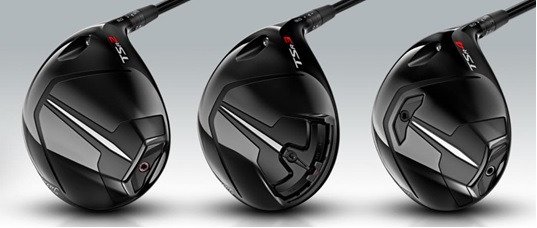How Does Golf Shaft Flex Affect Ball Flight?
Posted by Dallas Golf on 14 Sep 2022

Perhaps more than any other aspect of golfing and equipment, the shaft you pair with your drivers will affect ball flight. It’s absolutely true that the club head and your natural abilities and tendencies will as well, but the shaft has a profound impact on performance that cannot be understated.
So if you’ve been at the driving range and working with a trainer to hone and refine your form and choose better equipment, make sure you don’t overlook the golf shaft you mate to your driver. These are some of the many ways in which the shaft can affect ball flight. Leverage this knowledge to your next purchase the next time you go looking for golf shafts for sale.
Shaft Flex, Torque, and Kick Point
A golf shaft can be evaluated on a wide range of metrics, including length, weight, material and more. But there is one aspect that rises above these others and which more than any other impacts ball flight. It is the shaft flex rating.
Shaft flex is a rating of how stiff a shaft is or how much it flexes under stress. Shaft flex ratings are not standardized and the metric is fairly complex. Additionally, the flex rating doesn’t just have a huge impact on ball flight. It also impacts other shaft ratings such as kick point and torque.
Usually, an EI profile is used to assess the flexibility of a golf shaft through the tip section, the midsection and the butt section, and how much the shaft loads with energy and releases it on contact with the ball.
Moreover, shaft flex can be subdivided into several other categories including static flex, tip flex, and frequency.
Static flex is one of the most basic assessments for measuring how flexible a golf shaft is. This sort of measurement is taken by clamping the shaft and applying a force to the tip. The shaft is assessed on how much it bends in response to the load.
Tip flex is like static flex except the shaft is clamped and held steady at the tip, with the load being applied to the butt section of the shaft. This gives a measurement of how soft or flexible the shaft is at the tip section.
Then you have frequency, which is a measurement of how much a shaft vibrates or oscillates back and forth when a load is applied to it. To measure frequency, a shaft is secured at the butt section and a load is applied to the tip section. It is loaded further and released, causing it to vibrate. The faster it vibrates, the higher the frequency and the stiffer the shaft, and the more slowly it vibrates, the lower the frequency and more flexible the shaft.

These measurements are all crucial in determining how the golf shaft will affect ball flight. It can be generally said that the more flexible a shaft is, the higher the launch profile and spin will be. The stiffer the shaft is, the lower the launch profile and the less spin there will be.
This does not make one shaft flex better or worse than the other, simply that different shaft flex ratings are better for different players.
For instance, a player with a slow swing speed might have a hard time controlling shot dispersion and adding yards to his or her swing. A more flexible golf shaft might be able to help with that, because higher launch can correspond to greater ranges and moreover, more ball spin can generally increase lift, allowing the ball to go further.
However, players with higher swing speeds might not need these boosts. Although ball spin can increase lift, it can also make the flight of the ball slightly more erratic. A player with a high swing speed might find flexible shafts unwieldy because they cause errant, erratic ball flight.
Additionally, players with high swing speeds might not need that assist; their swing speeds might already be high enough to provide that extra power for range. What they might need instead is a stiffer, more predictable shaft that delivers a low launch and low spin, for greater control over flight accuracy rather than distance.
But shaft flex is not the only metric to keep your eye on. You also have kick point and torque rating, which can also impact ball flight and which are products of shaft flex.
Kick point is how high or low on the shaft it appears to flex. Shafts with a high kick point feel like they flex consistently and evenly along the shaft; if anything, they “flex” higher up the shaft, closer to the grip. Shafts with a low kick point concentrate much of the flex lower down near the club head. In laymen’s terms, they feel like they bend more.
Shafts with higher kick points tend to be stiffer and feel more fluid, almost like they are “one piece.” A higher kick point, like a higher shaft flex rating, typically corresponds to lower launch profiles and lower spin.
Shafts with lower kick point ratings generally produce ball flights with a higher launch profile or greater spin. They also correspond to more flexible shafts and so are more suitable for players with slower swing speeds, as they can add spin for lift, and a higher launch, for greater distance.
Finally, you have torque rating, which is also partially a product of shaft flex, and which measures the amount by which (in degrees) a shaft will twist around an axis driven through its center. For instance, a shaft torque rating of 5 indicates that the shaft will twist by 5 degrees.
Shafts with higher torque ratings feel more flexible and shafts with lower torque ratings feel stiffer, but as a general rule torque doesn’t have a huge effect on ball flight. If the shaft has a very high torque rating, however, it can impact the manner in which the club head impacts the ball, which can cause greater spin or even cause pushes and slices.
None of this is to suggest that any golf shafts for sale are inherently good or bad. The takeaway here is that there are many different shaft flexes and each of them is designed for a specific skill set. You simply need to find out what shaft flex is appropriate for your skill set and which isn’t.

Not All Flex Ratings Are The Same: Take Advantage of Golf Club Fitting Services
Another important fact to remember is that not all shaft flex ratings are equivalent. Two different manufacturers could rate their shafts using an “extra stiff” designation but the shafts might provide very different performances.
That’s one of the reasons it’s so important to work with a professional trainer for club fitting services before you try to determine which golf shafts for sale are best for you. Trainers will interview you, observe your swing, learn more about your goals and then suggest specific shafts for you that will bring out the best of your abilities.
If you’re in our area, you can come into our retail shop to work with our professionals for golf club fitting services and we’ll help you bring your game to the next level. If not, you can always give us a call at 800-955-9550 for more information and we’ll help you find the golf equipment that will suit you best.
